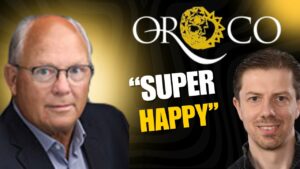The World Gold Council today publishes a Guidance Note on all-in sustaining costs and all-in costs metrics, which gold mining companies can use to report their costs as part of their overall reporting disclosure. The World Gold Council has worked closely with its member companies to develop these non-GAAP measures which are intended to provide further transparency into the costs associated with producing gold.
It is expected that these new metrics, the all-in sustaining cost and the all-in cost will be helpful to investors, governments, local communities and other stakeholders in understanding the economics of gold mining. The all-in sustaining costs is an extension of existing cash cost metrics and incorporate costs related to sustaining production. The all-in costs includes additional costs which reflect the varying costs of producing gold over the life-cycle of a mine. It is up to individual companies to determine how they report to the market and to decide whether their stakeholders will find these new metrics of value in understanding their businesses; it is expected that, since many companies report on a calendar year basis, they may choose to use these metrics from 1 January 2014.
Terry Heymann, Director Responsible Gold, World Gold Council said: These new metrics have been developed to help provide greater clarity and improve investor understanding. All companies involved in gold-mining, including those which are not Members of the World Gold Council, will be free to use these metrics. Individual companies have responsibility for their own reporting, but we expect that many will use these new metrics, providing further consistency for investors and other stakeholders.
For further information please contact:
James Murray
World Gold Council
T +44 7595 271820
E james.murray@gold.org
Note to editors:
World Gold Council
The World Gold Council is the market development organisation for the gold industry. Working within the investment, jewellery and technology sectors, as well as engaging with governments and central banks, our purpose is to provide industry leadership, whilst stimulating and sustaining demand for gold.
We develop gold-backed solutions, services and markets, based on true market insight. As a result, we create structural shifts in demand for gold across key market sectors.
We provide insights into the international gold markets, helping people to better understand the wealth preservation qualities of gold and its role in meeting the social and environmental needs of society.
Based in the UK, with operations in India, the Far East, Europe and the US, the World Gold Council is an association whose members include the worlds leading and most forward thinking gold mining companies.
Guidance note on non-gaap metrics all-in sustaining costs and all-in costs
|
| US $ / gold ounces sold |
|
|
|
On-Site Mining Costs (on a sales basis) | Income Statement | (a) |
On-Site General & Administrative costs | Income Statement | (b) |
Royalties & Production Taxes | Income Statement | (c) |
Realised Gains/Losses on Hedges due to operating costs | Income Statement | (d) |
Community Costs related to current operations | Income Statement | (e) |
Permitting Costs related to current operations | Income Statement | (f) |
3rd party smelting, refining and transport costs | Income Statement | (g) |
Non-Cash Remuneration (Site-Based) | Income Statement | (h) |
Stock-piles / product inventory write down | Income Statement | (i) |
Operational Stripping Costs | Income Statement | (j) |
By-Product Credits | Income Statement | (k) Note: this will be a credit |
Sub-Total (Adjusted Operating Costs) |
| (l) = (a) + (b) + (c) + (d) + (e) + (f) + (g) + (h) + (i) + (j) + (k) |
|
|
|
Corporate General & Administrative costs (including share-based remuneration) | Income Statement | (m) |
Reclamation & remediation accretion & amortisation (operating sites) | Income Statement | (n) |
Exploration and study costs (sustaining) | Income Statement | (o) |
Capital exploration (sustaining) | Cash Flow | (p) |
Capitalised stripping & underground mine development (sustaining) | Cash Flow | (q) |
Capital expenditure (sustaining) | Cash Flow | (r) |
All-in Sustaining Costs |
| (s) = (l) + (m) + (n) + (o) + (p) + (q) + (r) |
|
|
|
Community Costs not related to current operations | Income Statement | (t) |
Permitting Costs not related to current operations | Income Statement | (u) |
Reclamation and remediation costs not related to current operations | Income Statement | (v) |
Exploration and study costs (non-sustaining) | Income Statement | (w) |
Capital exploration (non-sustaining) | Cash Flow | (x) |
Capitalised stripping & underground mine development (non-sustaining) | Cash Flow | (y) |
Capital expenditure (non-sustaining) | Cash Flow | (z) |
|
|
|
All-in Costs |
| = (s) + (t) + (u) + (v) + (w) + (x) + (y) + (z) |
Notes:
- All companies using this guidance are encouraged to disclose both their all-in sustaining costs and all-in costs and reconcile these metrics to their GAAP reporting. It is not expected that companies will disclose all individual cost items.
The use of the sub-total (adjusted operating costs) may be helpful for certain companies in providing reconciliation to historical metrics but it is not expected that all companies will provide disclosure at this level. The sub-total (adjusted operating costs) metric may not be directly comparable across companies, for example, because of differences between IFRS and US GAAP. - It is recognised that accretion related to asset retirement obligations (ARO) and amortisation of the ARO assets for reclamation and remediation do not reflect annual cash outflows but these accounting calculations are considered to be more representative of the periodic costs of reclamation and remediation.
- Non-sustaining costs are those costs incurred at new operations and costs related to major projects at existing operations where these projects will materially increase production. Companies need to publicly disclose those operations and major projects which are considered non-sustaining. All other costs related to existing operations are considered sustaining.
- Costs should be reported on the same basis as sales (i.e. if sales figures are reported on a consolidated basis, costs should be reported on a consolidated basis; if sales figures are reported on an attributable basis, costs should be reported on an attributable basis).
- Costs Excluded
The following costs are excluded from the guidance:
- Income tax.
- Working capital (except for adjustments to inventory on a sales basis).
- All financing charges (including capitalised interest).
- Costs related to business combinations, asset acquisitions and asset disposals.
- Items needed to normalise earnings, for example impairments on non-current assets and one-time material severance charges. Costs related to any of the listed line-items used to calculate all-in costs in the above table should not be excluded.
- Income tax.





















